Methanol: the next hydrogen?

Methanol is becoming more exciting than hydrogen as a clean fuel to help decarbonize transport. Specifically, blue methanol and bio-methanol are 65-75% less CO2-intensive than oil products, while they can…

Methanol is becoming more exciting than hydrogen as a clean fuel to help decarbonize transport. Specifically, blue methanol and bio-methanol are 65-75% less CO2-intensive than oil products, while they can…
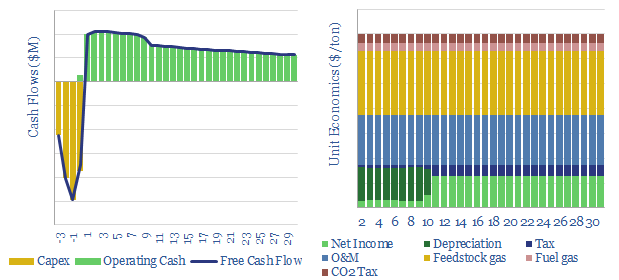
…gas reforming, blue methanol from blue hydrogen and industrially captured CO2, green methanol from green hydrogen and direct air capture CO2, and finally bio-methanol. Inputs are taken from a wide…
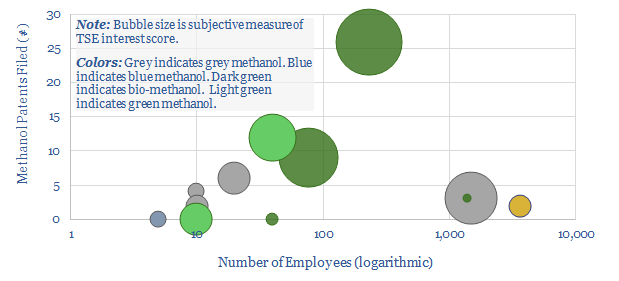
…filed into methanol production since the year 2000. For new, lower-carbon methanol producers, we have compiled a screen, noting each company’s size, patent library and a short description (chart above)….
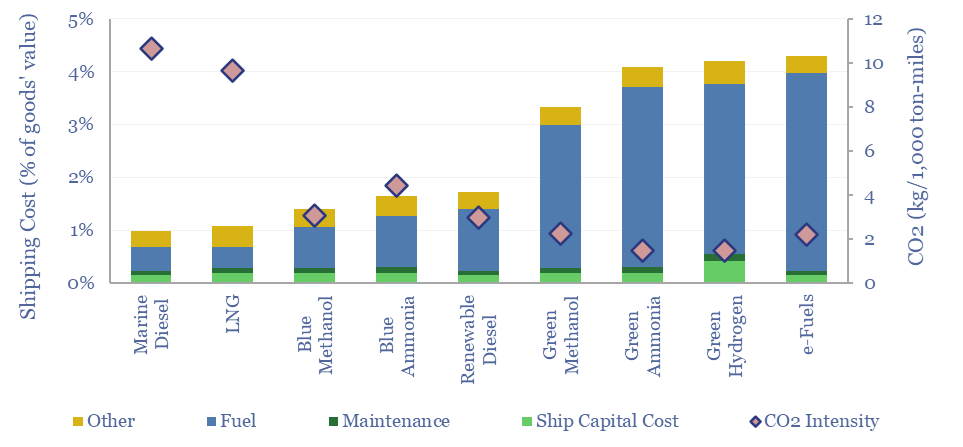
This data-file screens the costs of alternative shipping fuels, such as LNG, blue methanol, blue ammonia, renewable diesel, green methanol, green ammonia, hydrogen and e-fuels versus marine diesel. Shipping costs…
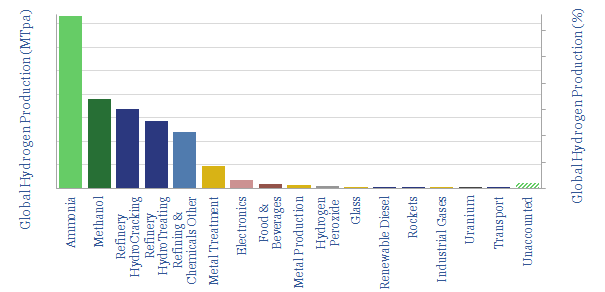
…methanol and in refining. The data-file looks industry by industry, and also covers different hydrogen production technologies, used to supply today’s 110MTpa market. $499.00 – Purchase Checkout Added to cart The ammonia…
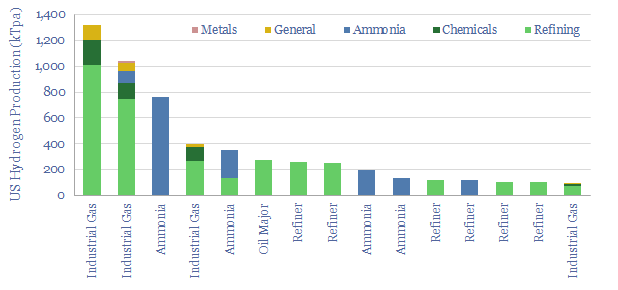
…in chemicals/methanol. This datafile breaks down US hydrogen production by facility. Owners of existing steam methane reforming units may readily be able to capture CO2 and benefit from CO2 disposal…
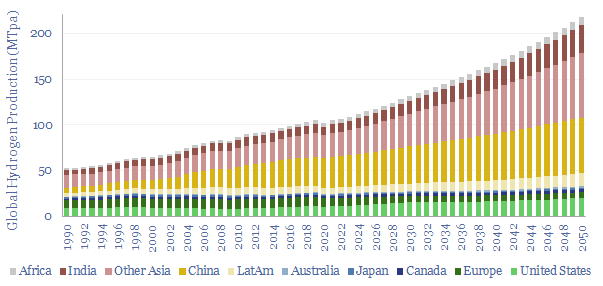
Global production of hydrogen is around 110MTpa in 2023, of which c30% is for ammonia, 25% is for refining, c20% for methanol and c25% for other metals and materials. This…
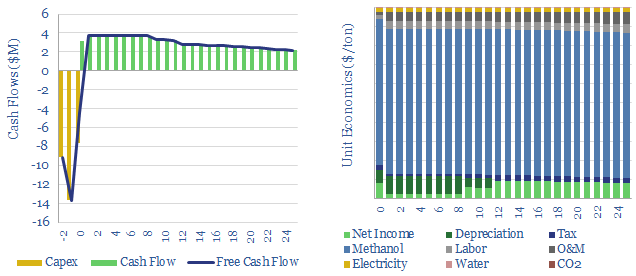
…of which c90% is embedded in producing methanol as a chemical input. Further research on formaldehyde production costs and how methanol is gaining ground in energy transition is linked here….
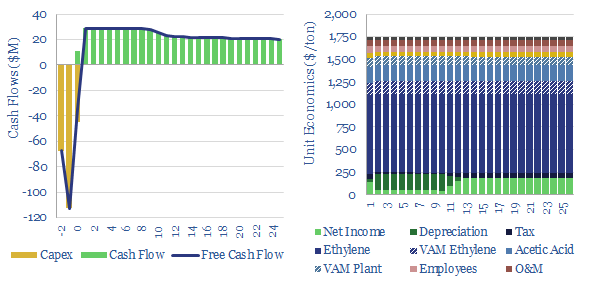
…acetate production occurs via the relatively complex pathway shown below. Natural gas liquids are fractionated into ethane. Ethane is cracked into ethylene. Natural gas is also converted into methanol. Then…
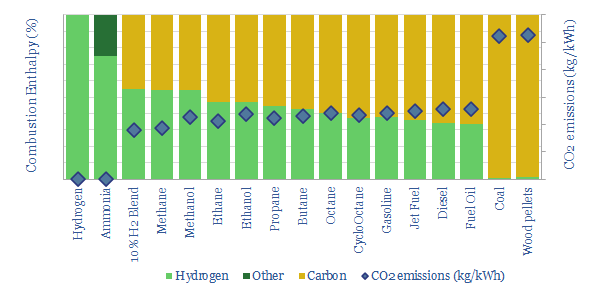
The purpose of this data-file is to disaggregate the energy content of combustion fuels, including natural gas, different oil products, NGLs, coal, hydrogen, methanol, ammonia et al. $299.00 – Purchase Checkout Added…